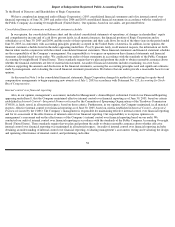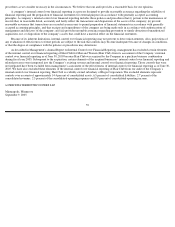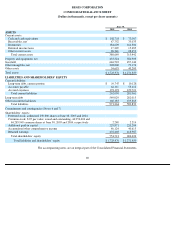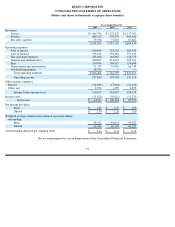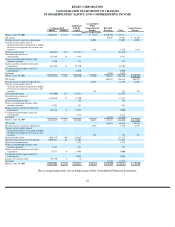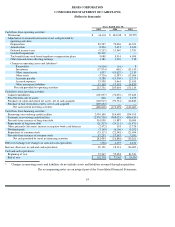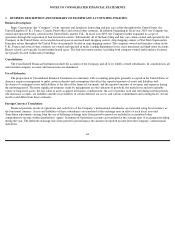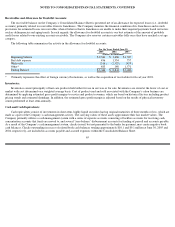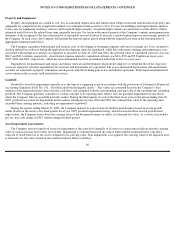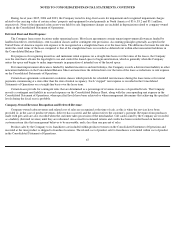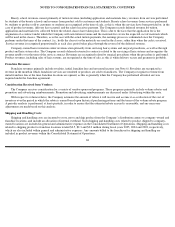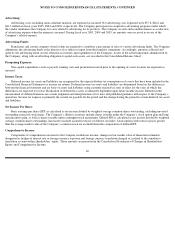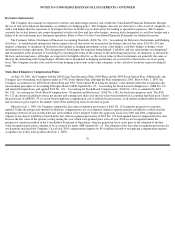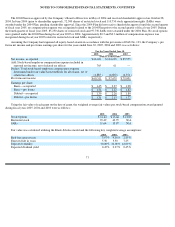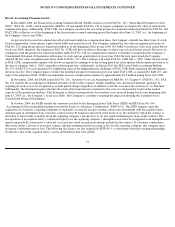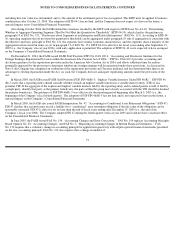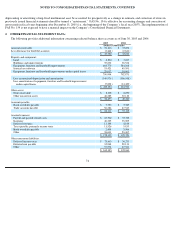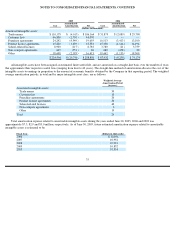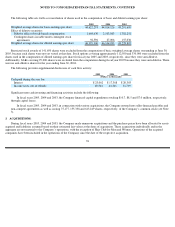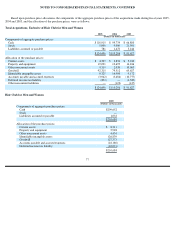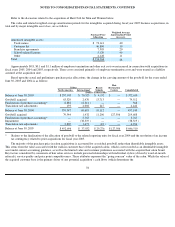Supercuts 2005 Annual Report Download - page 69
Download and view the complete annual report
Please find page 69 of the 2005 Supercuts annual report below. You can navigate through the pages in the report by either clicking on the pages listed below, or by using the keyword search tool below to find specific information within the annual report.
NOTES TO CONSOLIDATED FINANCIAL STATEMENTS, CONTINUED
Beauty school revenues consist primarily of tuition revenue (including application and materials fees), revenues from services performed
by students at the beauty schools and revenues from product sold to customers and students. Beauty school revenues from services performed
by students or product sold to customers or students are recognized at the time of sale, as this is when the services have been provided or, in the
case of product revenues, delivery has occurred, and the school receives payment. The Company records deferred revenue for tuition,
application and materials fees collected before the related classes have taken place. This is due to the facts that the application fee is the
origination of a contract under which the Company will earn tuition revenue and the materials fee covers the expected cost of materials which
will be used in the classes. Therefore, as is the case with the actual tuition payments, the earnings process is culminated once the Company
performs under the terms of the contract (i.e., holds the classes) or the materials are used in the classes, rather than when the cash is received.
Service revenue is recognized proportionally as each class period takes place through the reversal of the deferred revenue.
Company-owned hair restoration center revenues stem primarily from servicing hair systems and surgical procedures, as well as through
product and hair system sales. The Company records deferred revenue for contracts related to the servicing of hair systems and recognizes the
revenue ratably over the term of the service contract. Revenues are recognized related to surgical procedures when the procedure is performed.
Product revenues, including sales of hair systems, are recognized at the time of sale, as this is when delivery occurs and payment is probable.
Franchise Revenues:
Franchise revenues primarily include royalties, initial franchise fees and net rental income (see Note 6). Royalties are recognized as
revenue in the month in which franchisee services are rendered or products are sold to franchisees. The Company recognizes revenue from
initial franchise fees at the time franchise locations are opened, as this is generally when the Company has performed all initial services
required under the franchise agreement.
Consideration Received from Vendors:
The Company receives consideration for a variety of vendor-sponsored programs. These programs primarily include volume rebates and
promotion and advertising reimbursements. Promotion and advertising reimbursements are discussed under Advertising within this note.
With respect to volume rebates, the Company estimates the amount of rebate it will receive and accrues it as a reduction of the cost of
inventory over the period in which the rebate is earned based upon historical purchasing patterns and the terms of the volume rebate program.
A periodic analysis is performed, at least quarterly, in order to ensure that the estimated rebate accrued is reasonable, and any necessary
adjustments are made based on this analysis.
Shipping and Handling Costs:
Shipping and handling costs are incurred to store, move and ship product from the Company’s distribution centers to company-owned and
franchise locations, and include an allocation of internal overhead. Such shipping and handling costs related to product shipped to company-
owned locations are included in general and administrative expenses in the Consolidated Statement of Operations. Shipping and handling costs
related to shipping product to franchise locations totaled $2.5, $2.3 and $2.0 million during fiscal years 2005, 2004 and 2003, respectively,
which are also included within general and administrative expenses. Any amounts billed to the franchisee for shipping and handling are
included in product revenues within the Consolidated Statement of Operations.
68


